The Pixel Prophet #16
Pixel Prophet Newsletter: Tributes, indie game reviews, and updates on the latest game dev tools in the industry. (Summary was AI generated)

Dearest readers,
I started writing this newsletter thousands of miles away from home, in a little café in Santa Monica, and finished it in my hotel room on the evening before my departure back home.
I tried to maintain my usual quality level (albeit with my sometimes clumsily constructed sentences) despite the spotty internet connections and not my usual amount of spare time. I did my best, just want to manage your expectations.
Still, I hope you still enjoy this Prophet nonetheless!
— Phil, unicorn-in-chief

You can support the Pixel Prophet at ko-fi, or donate via PayPal to ensure its sustainability. It also helps to tell others about the Prophet who share your great taste in newsletters.
News & Updates
- Pixel artist F. David Thorpe passed away aged 84. The artist known and beloved for his spectacular ZX Spectrum loading screens, succumbed to a long illness on April 18th this year. Binary Zone put together a wonderful ►tribute including all of David’s works.
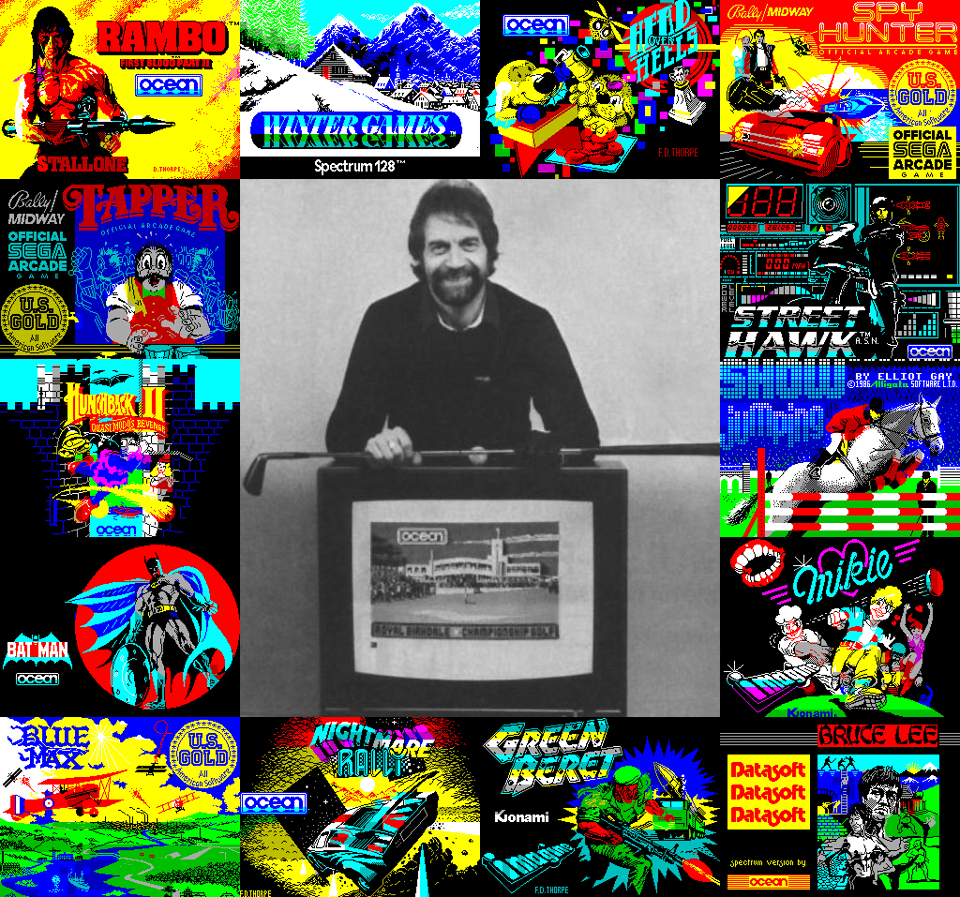
- Palestine Relief Bundle is ►on sale on itch.io right now. After a bumpy start, it’s still running for a few days when this newsletter comes out. For $8 or more you’ll get access to a treasure trove of 373 items that would cost you over $1,600 regularly.
- “Gamers Are Renting Their Idle GPUs to Generate AI Porn”; that’s the headline of the 404media article by Emanuel Maiberg and the ►story is as crazy as you’d think.
Games
Big and small, old, and new, indie and very indie
The Collage Atlas
RELEASED • Walk the Line
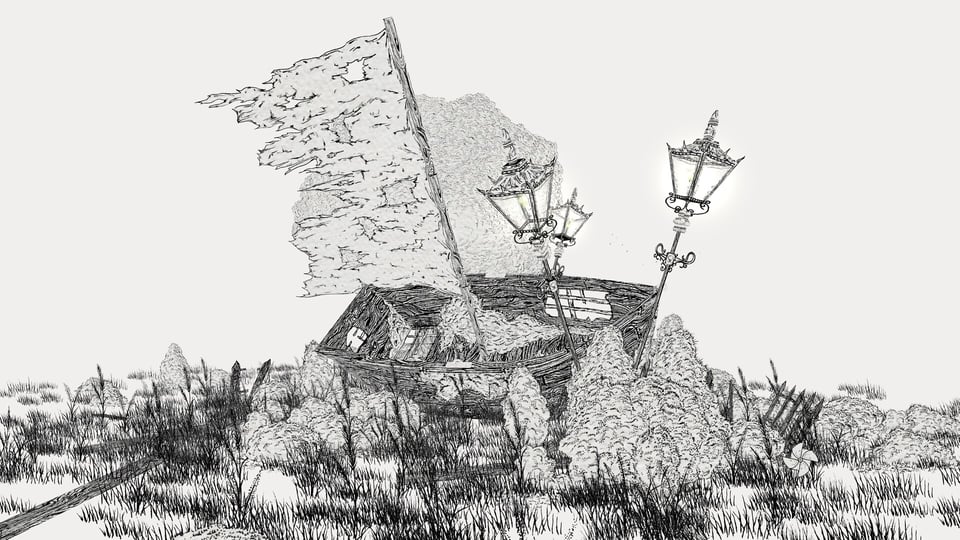
Developer John William Evelyn spent 4.5 years diligently drawing and designing ►The Collage Atlas, a “hand-drawn picture-book dream-world” of an experience. Its intricately inked lines are something that heavily compressed videos can hardly carry across, so I urge you to check out the screenshots or buy the game outright. The experience is short but dense and definitely something to immerse yourself into.
It reminds me of titles such as Mundaun (2021), another solo effort with entirely hand-drawn visuals by Helvetian Michel Ziegler; Gorogoa (2017), Jason Roberts’ BAFTA award-winning puzzle game with its own dreamlike story; and perhaps also Cyan’s seminal HyperCard original, The Manhole (1988) for the Macintosh.
Tiny Tires
IN DEVELOPMENT • Microscopic Vehicles
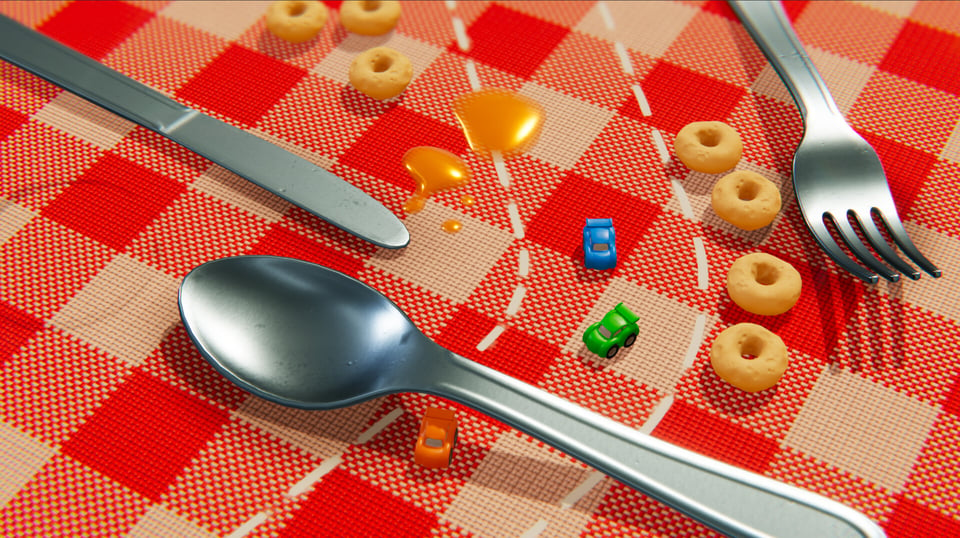
Straight out of Denmark comes this unlikely spiritual predecessor of Codemasters’ Micro Machines (1991). Jón Kristinsson’s ►Tiny Tires seems like an outright remaster of the DOS/NES game, it even includes those charming little details such as plumes of dust upon landing after a jump. Tiny Tires expands upon its inspiration in many aspects: More variety in the courses, better multiplayer modes, and, best of all, obstacles are physical objects, meaning you can shove them in the path of your opponents. The color palette alone screams fun!, and the trailer’s chirpy FM synth AdLib-like music already makes me want to play it.
POOLS
RELEASED • Swimminal Horror
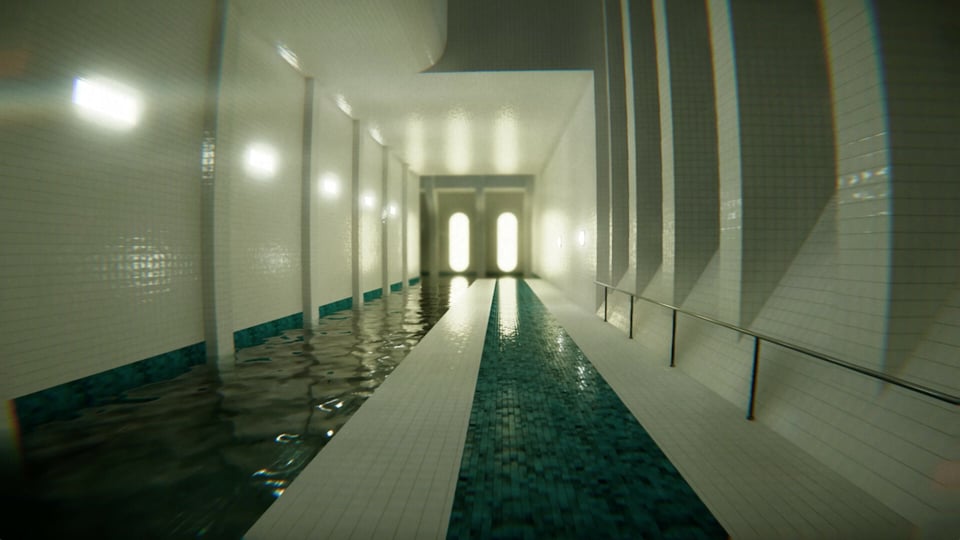
The small Finnish developer from Jyväskylä, Tensori, released and self-published ►POOLS, their take on the classic liminal trope of impossible water pool landscapes. Originally envisioned as Dream Pools by artist Jared Pike, the trope inspired many others in their own creations. POOLS is not as much of a puzzle or horror game, instead it invites you to explore its mazes; “mostly you’re just… there”.
The game is off 10% until May 3rd and there’s also a demo available on Steam.
Dreamsweeper
IN DEVELOPMENT • Roguemine

Great news from Mexican developer Etherlight. A year after their first game Mislight (2023), an “Adventure Platformer game with RPG elements,” there’s a new game in the works: ►Dreamsweeper combines an unusual mix of elements. Imagine playing a character on a Minesweeper (1989) playing field: Every step you take is a new little puzzle. Combined with Etherlight’s charming pixel art and the “lo-fi musical experience,” Dreamsweeper seems to shape up to something entertaining and special.
Exophobia
IN DEVELOPMENT • GenX-o-phobia

Many Gen-X-shooters of the era looked pixely; DOOM (1993); Duke Nukem 3D (1996); Star Wars: Dark Forces (1995); they all had that 1990s look to them before 3D models for both environments and enemies had become feasible.
With the currently developed FPS ►Exophobia by José Castanheira (a.k.a. Zarc Attack) from Portugal, the prominent pixels are not a byproduct, they are intentional. This old-school shooter takes you aboard a “crashed human spaceship infested with relentless hordes of aliens.” The gameplay is fast-paced and delightfully retro, its look inviting with that distinctive palette and all those lovingly pushed pixels. Exophobia will be José’s first commercial release when it’s out by the end of July; there’s already a demo available.
Space Cowboy
IN DEVELOPMENT • In Space, No One Can Hear You Dream

Jürgen Brunner of ILIKESCIFI just dropped the latest ►teaser to his personal Mount Everest of a project that is Space Cowboy, a 2d space exploration game that combines jump-n-shoot, space battles, trading, scavenging, and just floating in space, listening to radio. While the game still seems to be a long way from home, you can support the dev and follow the project on Patreon.
picoSYNTH
IN DEVELOPMENT • Operator of a Music Calculator

Johan Peitz is a content-creation machine! In the past two years, Johan released no less than five games on Steam (two of which I covered in the Pixel Prophet already) and now there’s number six announced.
Not so much of a game as a musical toy box, ►picoSYNTH combines electronic music making with play. Made entirely with the restrictions of the PICO-8 fantasy console, picoSYNTH is a fully-fledged audio application to compose and experiment with chipmusic. Select oscillators, compose patterns, and hook everything up with dangling cables. Yes, just like in Reason!
Super Moxio Bros
RELEASED • My Type of Game
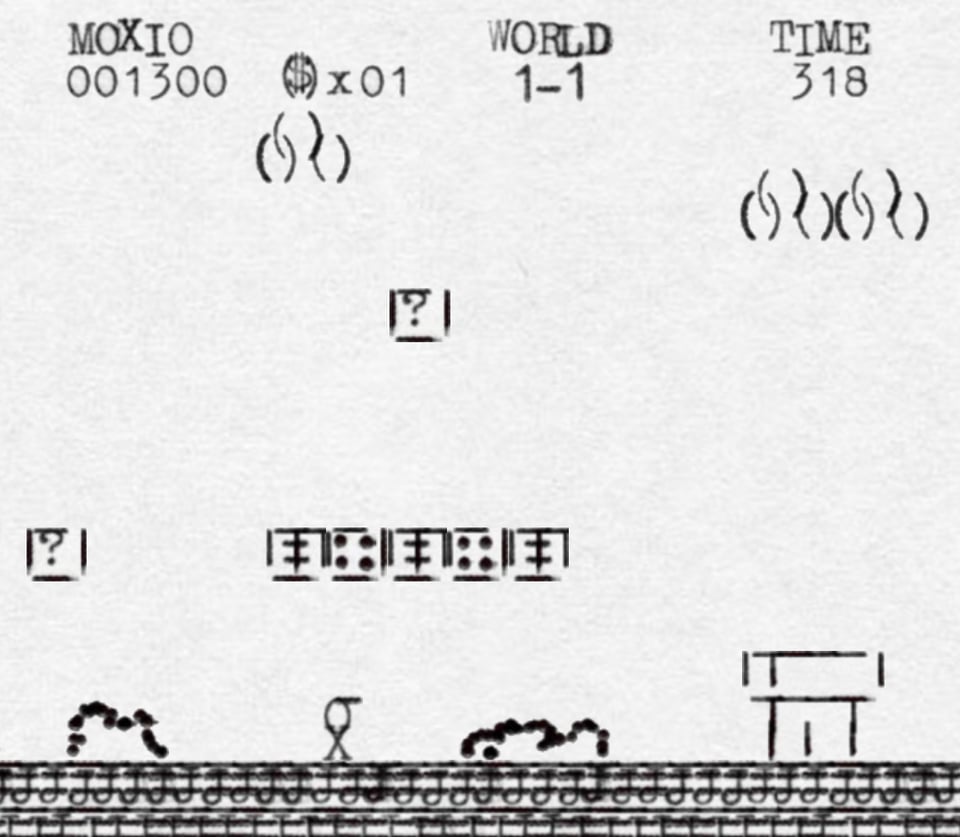
This is the Super Mario Bros (1986) we all know and love but, wait, what’s this? ►Super Moxio Bros. looks totally different!
The game was “a collaboration between developer Tiny Bookshelf and artist ♡-𝚖𝚘𝚡”, its art was entirely made with a typewriter (for the younger readers, that’s like a keyboard that prints text as you type it). Suddenly there’s something new to explore in the visuals of old jumpman, something you can show to those literature snobs. The game is free to play on itch.io.
Programming & Game Dev
Tools, resources, wisdom, humor.
MORE GAMES • Dungeon Crawler Jam — If you are looking for original takes on that old genre, or just want to enjoy some very playable and entertaining gaming snacks in between your meetings, look no further thank this year’s ►Dungeon Crawler Jam entries. Personally, I like the Hercules-graphics-look of Cyclopean best. (via Konstantinos Dimopoulos on Twitter 𝕏)
It’s hard to crawl your head around the fact that the genre turns 50 next year. The first computerized instance being Reginald Rutherford III’s Pedit5 (1975) on PLATO. But was it truly the first? According to Brian Dear in The Friendly Orange Glow, “legend has it that an earlier game, with the equally obscure name of m119h, pre-dates Pedit5, but no one remembers who wrote it or when exactly it appeared—probably 1974.” Happy 50th then!
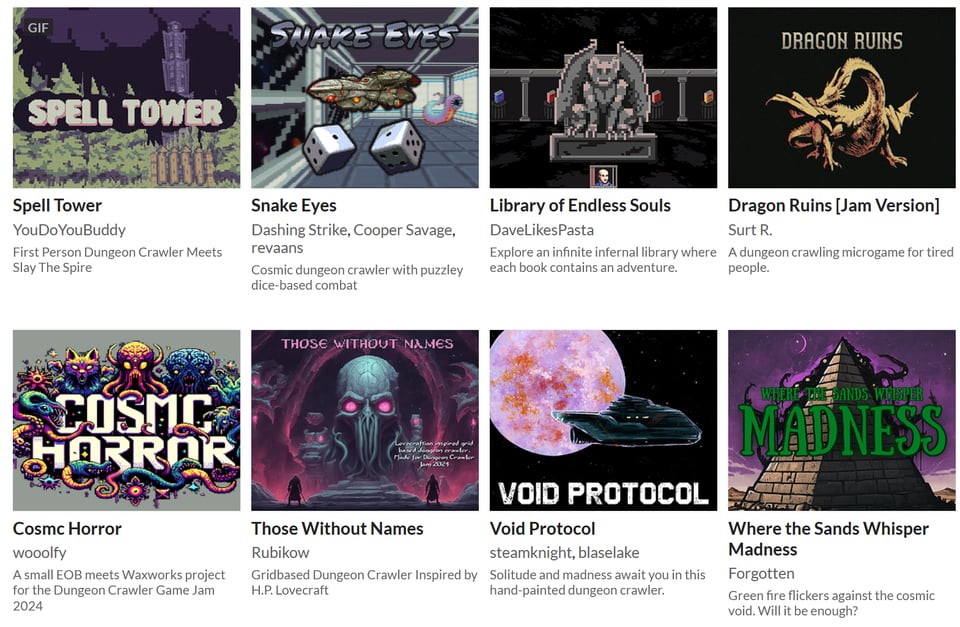
MS-DOS • Open-Sourced — If you ever wondered how Microsoft’s unlikely CP/M competitor they initially licensed from Tim Paterson looked under the hood, your time has finally come. While MS-DOS 1.25 and 2.0 had already been open-sourced 6 years ago by the tech giant from Seattle, last week MS-DOS 4.0 finally ►joined their ranks. In the announcement Microsoft pats itself on the shoulder for doing it “in the spirit of open innovation”. While not at all relevant anymore, good old 8086 assembly might still be an intriguing read for some of you nerds.
MINECRAFT • A World in a Grain of Sand — You have seen monumental projects being realized in Minecraft (2008): The entire fictional world of Westeros; a functioning Java emulator which with you can play the game inside itself; or Build the Earth that attempts a 1:1 recreation of what remains of our planet.
But in 2022, then-18-year-old Christopher Slayton already 1-upped the scene by building the known universe in Minecraft and ►sharing it in a YouTube video. Granted, its scale might not be 1:1 and the story is not the latest, the New York Times reported it already in October 2022, but since it was news to me, in the Prophet it went!

ARTICLE • The Tools We Made That Made Us — Artist Nathalie Lawhead’s work has already been featured in issues #6 and #11 of the Prophet. Again I want to highlight a new article they posted titled ►Solo-Devs and risk-takers (an artistic exploration of experimental tools). It’s about artists and indie creators who make and shape their tools as art rather than productivity products.
Embrace software that is about personal expression, because that’s at the heart of what art is all about!
DEBUGGING • Spaced out — Debugging is mildly annoying at best and outright maddening at worst. Because it can be so time-consuming, a quick iteration cycle is paramount. Imagine how hard it must be to debug an 46-year-old computer with a latency of close to 45 hours! Yet that’s exactly what NASA had to do to fix a faulty chip in Voyager 1’s flight data subsystem. ►Read all of how those lovable nerds saved science once again.
FALLOUT • Modding never changes — I guess I’m not the only one to download Fallout 4 (2015) again after enjoying the first season of the live-action show on Amazon. In that vein, let me point you toward ►Project Arroyo, a new Fallout 4 mod by a small team of dedicated fans. As PCGamesN’s Will Nelson reports, the group’s goal is to recreate the series’ most beloved installment, Fallout 2 (1998), in the modern engine and in turn have you experience New California from the first person.
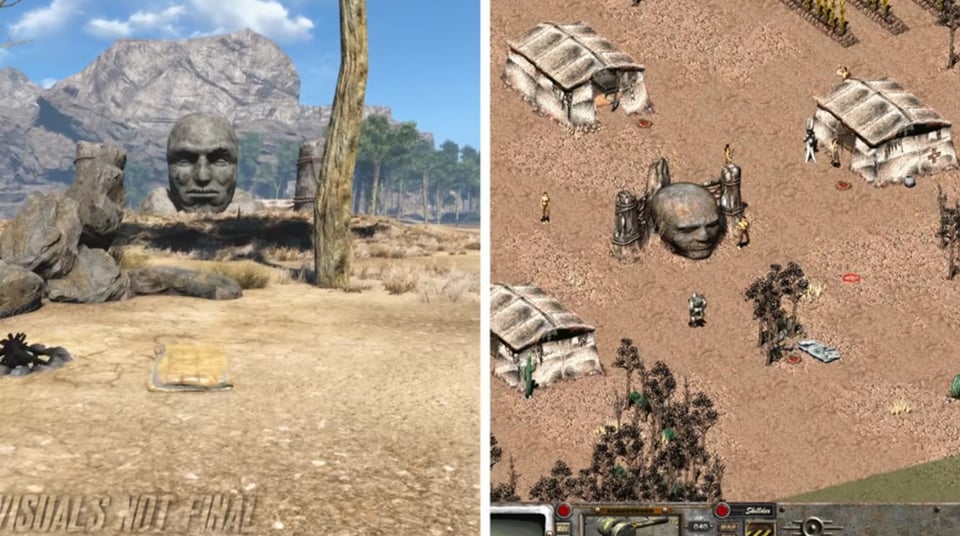
GODOT • Free Resources — Game developer and tech artist Passive Star shared the official curated list of free Godot ►resources on GitHub. We’re talking games (both 2d and 3d), demos, templates, modules, plugins, scripts, and more. Surely a great collection to get inspired or help you get over a bump in productivity.
CELLULAR AUTOMATA • A Fable of Life — I’m sure all of you have come across mathematician John Conway’s Game of Life (1970), those grid cells whose life is governed by simple rules that play out in turns or “generations”. This cellular automaton has since spawned many similar systems in games, for example water propagation in Dwarf Fortress (2006) or Minecraft’s terrain generation.
Now, software developer and artist Alex Miller a.k.a. SPACEFILLER wrote an entertaining (and illustrated) ►fable, partly explaining Conway’s rules and the game’s history featuring characters such as Pandora, Aristotle, and Conway himself.
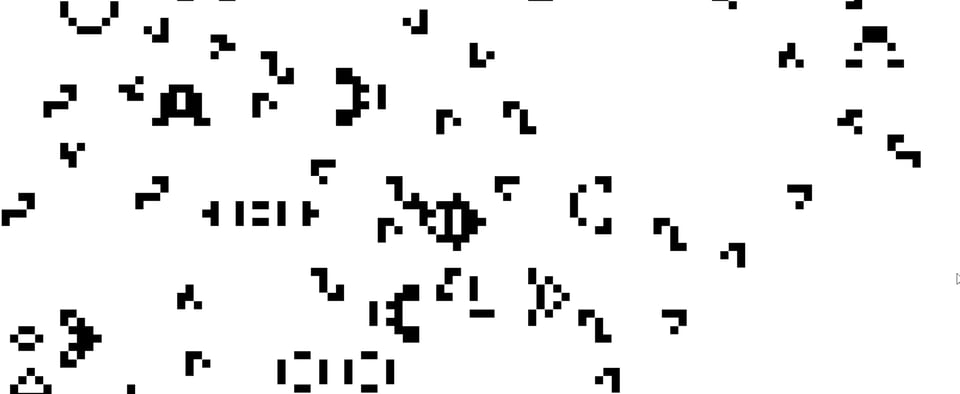
ULTIMA VII • First Person Britannia — Anthony Salter (Viridian Games) has been busy coding an ►alternative engine for Origin’s CRPG behemoth Ultima VII: The Black Gate (1992) that turns its uncomfortably-tiled isometric kingdom to proper 3D and even “fixes various issues with the game”. Intended for an April Fool’s joke, Anthony attempted to hack a first-person view into this engine, evidenced by this Twitter thread 𝕏. While Anthony admits that “it just doesn’t look very good”, seeing Britannia from this unusual perspective undeniably has its charms; not unlike Fallout 2, see above.
If you are looking for a more traditional Ultima 7 experience that also offers modern comfort, have a go at Exult.
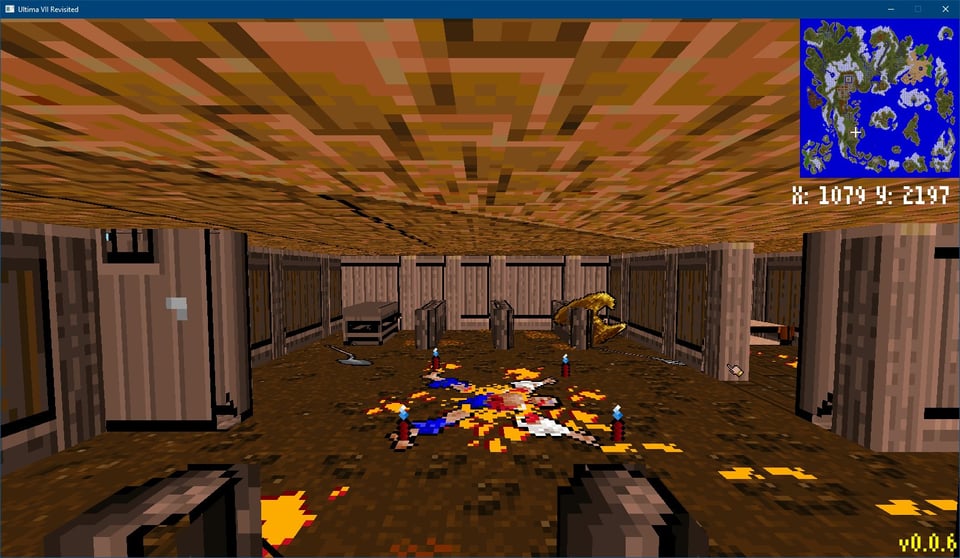
VIDEO CONFERENCING TOOL • Not the one you think — Mike Hoye endorsed a tool that is neither Teams, nor “Zoom or a Faangcorp thing” and recommends ►Whereby as “inexpensive [and] inoffensive”. Just putting this out there.
INDIE GAMES CONFERENCE • Micro Conference for Small Games — Ashley Gwinnell, the powerhouse behind the Indie Marketing Toolkit announced the ►IMPACT! Indie Games, an “all-day micro-conference set in the heart of Bristol” on May 23rd. It will cover topics ranging from game marketing, community growth, and publisher acquisition, in short, all things near and dear to indie developers. Be sure to secure your ticket!

COLOR SCIENCE • At a Glance — If you dabble with color, physically correct light distribution and optics, it’s always helpful to have a cheat sheet ready for when you need to look something up. The ►Color Science Precis is just that, “a set of posters designed for the computer-generated imagery artist” released under the CC-BY-SA-4.0 license. I’ve looked it over from my perspective and experience as a colorist and I can confidently give it the thumbs-up!
MOBILE PHONES • Don’t kill my app! — I am convinced that many of us have run into that issue: Your mobile phone would kill an app running in the background without telling you. Be it a route tracking app, a timer, or—worst case—an alarm. ►Don’t Kill My App is a helpful overview, categorized by severity/manufacturer for what both consumers and app developers can do (if anything) to keep background apps alive.
Art & Inspiration
Art, science, and other inspirations that left an impression on me
This time I want to share some of the photos I took during my stay in California. Hopefully, they inspire you a little.




Yes, the palm trees are obligatory.
Pixel’s Mixed Bag
What I’ve been up to ◾ Exhausted, that’s how I’d describe my current status. I’ve had a great time in the past two weeks yet at the same time, I’ve grown wary of bad hotel wifi and my sleeping rhythm being all messed up. Hopefully, I have more interesting things to tell you next time.
}

Little House on the Codebase by game designer Luke Muscat on Twitter 𝕏
You can support the Pixel Prophet at ko-fi, or donate via PayPal to ensure its sustainability. It also helps to tell others about the Prophet who share your great taste in newsletters.
Add a comment: